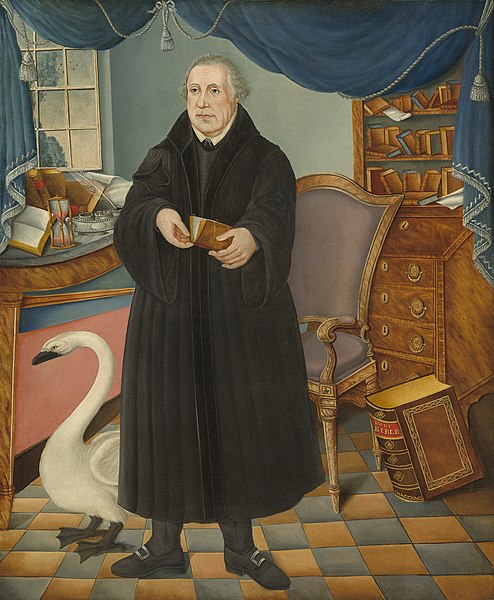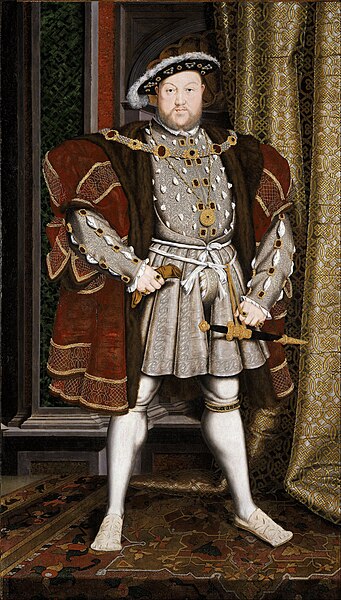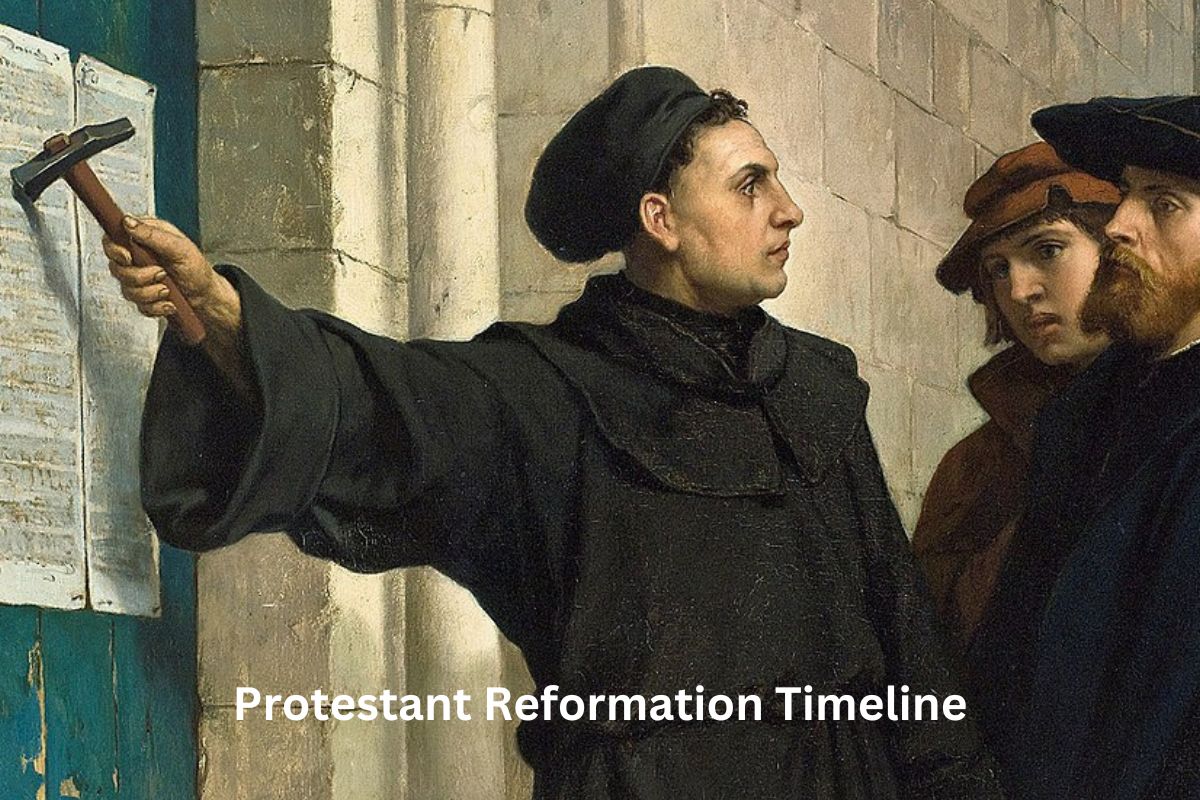The Protestant Reformation was a transformative religious and social movement that unfolded in the 16th century, challenging the established authority of the Roman Catholic Church in Western Europe.
It was marked by key figures like Martin Luther, John Calvin, and Henry VIII, who sought to reform or break away from the Catholic Church, leading to the emergence of various Protestant denominations.
Central to the Reformation were theological disputes, calls for reform in church practices, and a desire for increased access to the Bible.
The consequences of the Reformation were profound, shaping not only the religious landscape but also influencing political, social, and cultural developments in Europe and beyond.
| Year | Event |
|---|---|
| 1517 | Martin Luther posts 95 Theses in Wittenberg, Germany |
| 1519 | Debate at Leipzig between Luther and Johannes Eck |
| 1520 | Pope Leo X issues papal bull “Exsurge Domine” |
| 1521 | Diet of Worms: Luther refuses to recant |
| 1521 | Edict of Worms declares Luther an outlaw |
| 1525 | Peasants’ War in Germany |
| 1529 | Diet of Speyer: Princes protest, leading to “Protestants” |
| 1530 | Augsburg Confession presented by Lutheran princes |
| 1534 | Henry VIII declares himself head of Church of England |
| 1536 | John Calvin publishes “Institutes of the Christian Religion” |
| 1545-1563 | Council of Trent convenes |
| 1555 | Peace of Augsburg allows religious choice in Germany |
| 1572 | St. Bartholomew’s Day Massacre in France |
| 1598 | Edict of Nantes grants religious toleration in France |
| 1618-1648 | Thirty Years’ War in Europe |
| 1648 | Treaty of Westphalia ends the Thirty Years’ War |
Timeline of Protestant Reformation
1. Martin Luther posts 95 Theses (1517):
In 1517, Martin Luther, a German monk and theologian, wrote and posted his famous 95 Theses on the door of the Castle Church in Wittenberg, Germany.
These theses were a set of arguments and criticisms against certain practices of the Roman Catholic Church, particularly the sale of indulgences. Luther’s action was a call for scholarly debate within the church, but it unintentionally sparked a religious revolution.
Also Read: Facts About the Reformation
The widespread distribution of his theses, thanks to the recent invention of the printing press, led to the rapid dissemination of his ideas and the beginning of the Reformation.

2. Diet of Worms (1521):
The Diet of Worms was an imperial assembly convened by Holy Roman Emperor Charles V in 1521. It was a response to Martin Luther’s growing influence and his refusal to recant his beliefs as demanded by the church.
Also Read: John Calvin Facts
Luther was summoned to Worms, Germany, to defend his teachings. During this assembly, Luther famously declared, “Here I stand; I can do no other,” refusing to retract his theological positions.
This event marked Luther’s formal break with the Catholic Church and his status as an outlaw, but it also solidified his role as a leading figure in the Reformation.
3. Augsburg Confession (1530):
The Augsburg Confession was a pivotal document presented by Lutheran princes and theologians at the Diet of Augsburg in 1530. It was intended to provide a clear and concise statement of Lutheran beliefs and practices.
It outlined key theological points, such as justification by faith alone and the rejection of certain Catholic teachings. It sought to demonstrate that Lutheranism was not a radical departure from Christian tradition but a return to the teachings of the Bible.
The Augsburg Confession is considered one of the foundational texts of Lutheranism and played a crucial role in shaping the development of Protestantism.
4. Henry VIII’s Church of England (1534):

In 1534, King Henry VIII of England broke away from the authority of the Pope and established the Church of England, also known as the Anglican Church or the Episcopal Church.
Henry’s decision to separate from the Roman Catholic Church was primarily driven by his desire to annul his marriage to Catherine of Aragon and marry Anne Boleyn.
The Pope refused to grant the annulment, leading Henry to seek independence from the papacy. The English Reformation resulted in significant changes to the structure and doctrine of the Church in England, with the monarch becoming its supreme head.
The Church of England retained some Catholic traditions while adopting Protestant theology, making it a unique blend of both traditions.
5. John Calvin’s “Institutes” (1536):

In 1536, the French theologian John Calvin published the first edition of his magnum opus, “Institutes of the Christian Religion.”
This work became one of the most influential theological texts of the Reformation era. Calvin’s ideas, often referred to as Reformed or Calvinist theology, emphasized concepts such as predestination (the belief that God has already determined who will be saved), the sovereignty of God, and the importance of Scripture in Christian life.
Calvin’s teachings had a profound impact not only in Geneva, where he played a significant role in shaping the city’s religious and civic life but also throughout Europe and among various Protestant denominations.
6. Peace of Augsburg (1555):
The Peace of Augsburg was a significant political and religious settlement reached in 1555 in the Holy Roman Empire. It was intended to bring an end to religious conflicts between Catholics and Lutherans.
The key provision of the peace was the principle “Cuius regio, eius religio,” which means that the religion of the ruler would determine the religion of his subjects.
In other words, German princes could choose between Lutheranism and Catholicism for their territories, and religious minorities were granted some rights.
While the Peace of Augsburg provided a temporary solution to religious strife in the Holy Roman Empire, it did not address the emergence of other Protestant denominations and did not bring complete religious freedom.
7. Treaty of Westphalia (1648):
The Treaty of Westphalia was a series of peace treaties that ended the devastating Thirty Years’ War in Europe. The conflict had been fueled by religious tensions between Catholics and various Protestant groups.
The treaties were negotiated in the cities of Münster and Osnabrück and had wide-reaching consequences. Notably, they confirmed and extended the Peace of Augsburg’s religious provisions, recognizing Calvinism as a legitimate religion in addition to Catholicism and Lutheranism.
The Treaty of Westphalia is often seen as a turning point in the development of the modern nation-state system and helped establish the principle of religious toleration in Europe.
